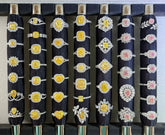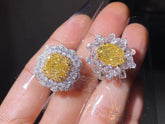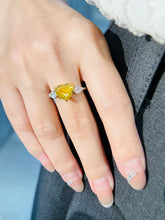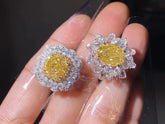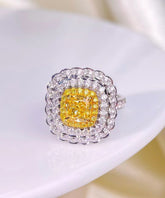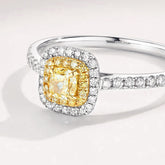How GIA Identifies Laboratory-Grown Diamonds?
In the past decade, laboratory-grown diamonds have become increasingly popular, with larger sizes and improved color and clarity, filling a significant gap in the industry. We have seen laboratory-grown diamonds that are larger and of higher quality than ever before, and they have long been recognized by the market and many diamond grading institutions.

GIA
Gemological Institute of America
As one of the world's most authoritative diamond appraisal institutions, the Gemological Institute of America (GIA) primarily identifies synthetic diamonds through the following criteria:
Crystals, Inclusions, and Cavities: This refers to the small gas, liquid, or solid particles trapped in the diamond crystal. Natural diamonds typically have some of these inclusions, but in cultured diamonds, these inclusions are usually controlled more finely. Therefore, GIA determines whether a diamond is cultured by examining these inclusions.

As shown in the image, the left column displays natural diamonds, while the right column displays diamonds grown using the CVD (Chemical Vapor Deposition) method. Natural diamonds contain needle-like, cloudy, and crystalline mineral inclusions, while the inclusions in cultured diamonds are related to their synthetic environment, often showing dust and metal inclusions.

Texture: This refers to the characteristics of the diamond's surface. In cultured diamonds, the texture may differ from natural diamonds due to the different growth environments. GIA carefully observes the surface features of diamonds to determine if they are cultured.
Cultured Diamonds vs. Natural Diamonds

The main difference between GIA's identification of laboratory-grown diamonds and natural diamonds lies in their sources and formation processes. Here is a simple comparison:
Source: Laboratory-grown diamonds are created in a laboratory environment by simulating the formation conditions of natural diamonds; natural diamonds are formed naturally deep within the Earth over billions of years of high temperature and high pressure.
Formation Time: The formation time of laboratory-grown diamonds is significantly shorter than that of natural diamonds, typically only taking a few weeks or months; whereas natural diamonds take billions of years to form.
Purity and Defects: Because the laboratory environment can more precisely control the diamond formation process, cultured diamonds usually have higher purity and fewer defects; whereas natural diamonds may contain some impurities or defects.
It is important to note that although these two types differ in their sources and formation processes, they are both real diamonds with the same hardness and sparkle in terms of physical and chemical properties. Furthermore, GIA's identification process ensures that consumers can accurately understand the type and quality of the diamonds they purchase.
To protect consumers and help them accurately understand what they are buying, GIA has developed advanced techniques to differentiate between laboratory-grown diamonds and natural diamonds. Here is how the identification and analysis process works from start to finish:
When a gemstone is first submitted, no assumptions are made based on its visual appearance, and no possibilities are ruled out. Something that looks like a diamond may actually be a simulant, such as cubic zirconia (CZ) or moissanite. Instead, gemologists rely on scientific measurements, such as the gemstone's refractive index, density, spectroscopy, etc., to determine its identity. If a gemstone is identified as a diamond, it is then tested to verify whether it is natural, treated, or laboratory-grown.
Laboratory-grown diamonds typically have unique features, such as graphite or metal inclusions (depending on the growth method), color zoning, or texture patterns visible under a microscope. For example, the presence of nickel or other metals in a diamond, along with a lack of natural features, indicates that the diamond is likely to be a high-pressure, high-temperature (HPHT) grown diamond. This is because HPHT diamonds often contain dark flux metal inclusions from the chambers used in their growth process. On the other hand, CVD diamonds typically contain dark graphite inclusions. These features can indicate to scientists the identity of the diamond, but they are not always conclusive.

Fluorescence is another powerful tool. Natural diamonds commonly exhibit blue fluorescence and, to a lesser extent, yellow fluorescence under long-wave ultraviolet (UV) light, with little or no blue or yellow fluorescence under short-wave UV light. The fluorescence effect is often uniform or unevenly distributed in bands. In contrast, cultured diamonds exhibit fluorescence opposite to this pattern. They show inert fluorescence under long-wave UV light and moderate to strong yellow-green fluorescence under short-wave UV light. Additionally, the fluorescence intensity under short-wave UV light is stronger than that under long-wave UV light.

This is why gemological laboratories also use absorption and luminescence spectroscopy techniques to identify diamonds. Some of these techniques involve using a spectrometer to measure the photoluminescence of a gemstone after being excited by laser light, or using deep ultraviolet light to image fluorescence in the gemstone. Photoluminescence spectroscopy can accurately display the defects in each diamond, which are characteristic of the diamond growth method. Under deep ultraviolet light, high-pressure, high-temperature diamonds often exhibit a cross-shaped pattern due to the way impurities were concentrated during diamond formation. In some cases, HPHT diamonds also exhibit phosphorescence, glowing even after exposure to ultraviolet light or after the light source is turned off.
Natural Diamond

In DDO Mode 1, natural diamonds mainly exhibit blue-white fluorescence. Some natural diamonds show weak blue fluorescence or dark blue fluorescence, and a very small number of natural diamonds may exhibit yellow, green, orange-red, or other fluorescence colors.
HPHT Lab-grown Diamonds

HPHT cultivated diamonds, i.e., diamonds grown using the high-pressure high-temperature method, exhibit strong blue-green fluorescence and strong phosphorescence in DDO Mode 1.
CVD lab-grown diamonds

CVD cultivated diamonds, i.e., diamonds grown using the chemical vapor deposition method, exhibit various fluorescence colors such as blue-green, yellow-green, green, red, yellow, orange-red, and blue-purple in DDO Mode 1. They typically have phosphorescent characteristics.
Jayzoff lab-grown diamonds

In CVD diamonds, photoluminescence spectroscopy can reveal the presence of common 'impurities' in CVD diamonds, such as silicon. Under deep ultraviolet illumination, CVD diamonds also show that they are grown layer by layer (like a stack of pancakes), which is a unique growth structure for diamonds grown using this method.
Once scientists identify a diamond as laboratory-grown, they carefully evaluate it just like a natural diamond. For increased transparency and identification, the girdle of laboratory-grown diamonds is laser-inscribed with their report number and a statement that the diamond is laboratory-grown. The LGDR accompanying laboratory-grown diamonds provides a comprehensive analysis of the diamond's specifications, including precise measurements and details involving the 4C standards (color, clarity, cut, and carat weight). You can be confident that every gemstone accompanied by a GIA certificate has been reliably and objectively assessed for its identity and quality.
